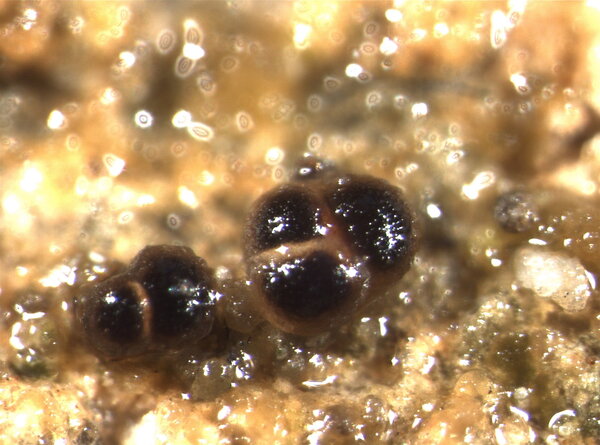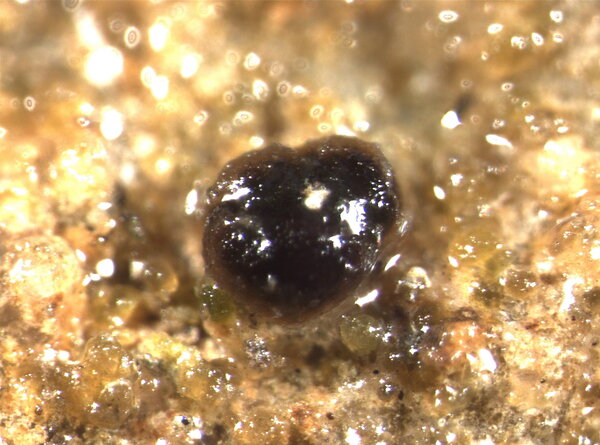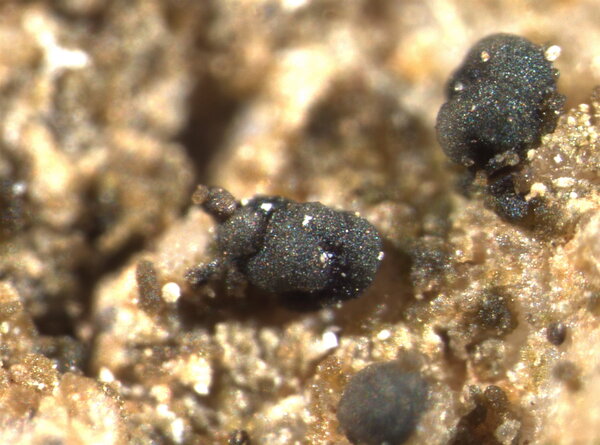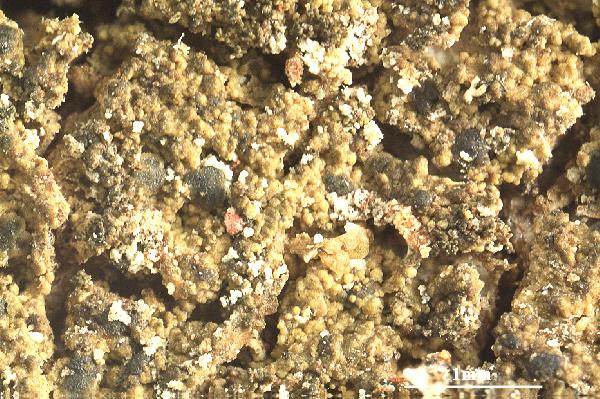Brianaria lutulata (Nyl.) S. Ekman & M. Svenss.
Lichenologist, 46: 292, 2014. Basionym: Lecidea lutulata Nyl. - Flora, 56: 297, 1873.
Synonyms: Biatora anthrophila (Larbal. ex Leight.) Walt. Watson; Lecidea anthrophila Leight.; Lecidea laxula Nyl.; Lecidea paucula Nyl.; Lecidea poliodes Nyl.; Micarea lutulata (Nyl.) Coppins; Micarea polioides (Nyl.) Vězda; Micarea umbrosa Vězda & V. Wirth
Distribution: N - Frl (Tretiach 2004), VA (Isocrono & al. 2008, Favero-Longo & Piervittori 2009).
Description: Thallus crustose, episubstratic, continuous to finely rimose, glaucescent white to greenish grey, sometimes yellowish brown or reddish brown when on iron-rich rocks. Apothecia micareoid, brownish, pale lead-grey fuscous brown to black (the paler ones always turning black when wet), 0.2-0.4 mm across, often confluent into tuberculate, up 1 mm wide aggregates, with a convex to globose disc, from the beginning without a proper margin. Proper exciple absent; epithecium colourless, very pale brown or deep green, K-, N-, or (when green) N+ red; hymenium colourless, pale brown or blue-green, often with vertical pigmented streaks, 30-40(-50) µm high; paraphyses scarce, of two types: the majority sparingly branched and 0.5-1.5 μm thick (the apices slightly wider), the others simple, often fasciculate, and 1.5-2 μm thick; hypothecium dark red-brown (appearing brown-black in thick sections) , K- or K+ intensifying red, N-. Asci 8-spored, cylindrical-clavate, the I+ blue tholus with a wide, I+ dark blue tube structure that expands towards the top, without a pale axial body, Psora-type, 30-40 x 8-12 μm. Ascospores 1-celled, hyaline, ellipsoid, (5-)6-7(-9) x 2-3(-4) µm. Pycnidia black, immersed, inconspicuous, the outer wall reddish brown, K-. Conidia cylindrical, not constricted in the middle, 3.8-5.5(-6.5) x 0.9-1.4 µm. Photobiont chlorococcoid, the cells thin-walled, (5-)8-15 μm wide. Spot tests: thallus K-, C-, KC-, P-, UV-. Chemistry: without lichen substances.Note: on dry, rain-sheltered surfaces of siliceous, often metal-rich rocks in humid natural habitats.
Growth form: Crustose
Substrata: rocks
Photobiont: green algae other than Trentepohlia
Reproductive strategy: mainly sexual
In underhangs rarely wetted by rain
Species of metal-rich rocks
Commonnes-rarity: (info)
Alpine belt: absent
Subalpine belt: absent
Oromediterranean belt: absent
Montane belt: extremely rare
Submediterranean belt: extremely rare
Padanian area: absent
Humid submediterranean belt: absent
Humid mediterranean belt: absent
Dry mediterranean belt: absent

Predictive model
Herbarium samples
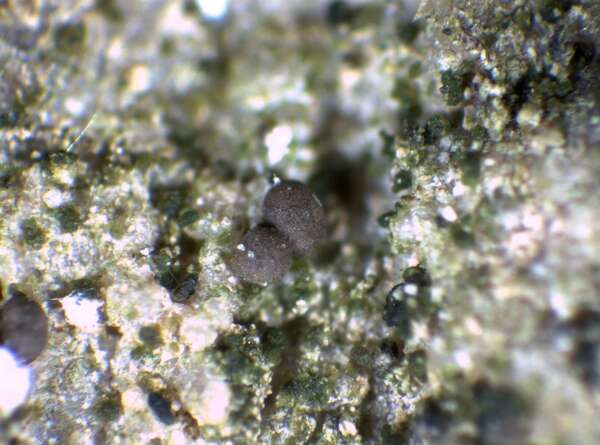

P.L. Nimis; Owner: Department of Life Sciences, University of Trieste
Herbarium: TSB (31402)
2001/11/26
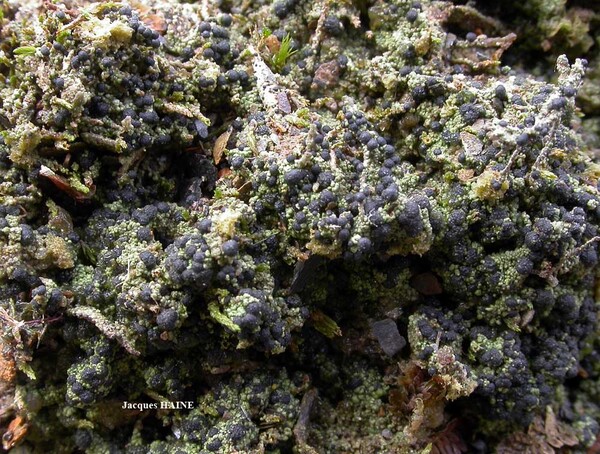
Jacques Haine - Source:http://www.lichensmaritimes.org/index.php?task=fiche&lichen=507&lang=en
France, Rocroi
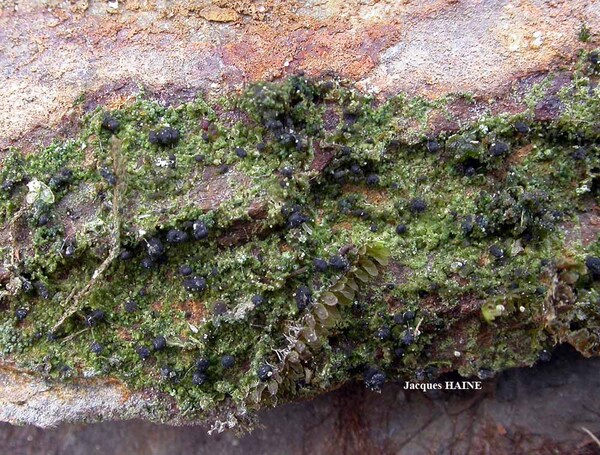
Jacques Haine - Source:http://www.lichensmaritimes.org/index.php?task=fiche&lichen=507&lang=en
France, Rocroi
Growth form: Crustose
Substrata: rocks
Photobiont: green algae other than Trentepohlia
Reproductive strategy: mainly sexual
In underhangs rarely wetted by rain
Species of metal-rich rocks
Commonnes-rarity: (info)
Alpine belt: absent
Subalpine belt: absent
Oromediterranean belt: absent
Montane belt: extremely rare
Submediterranean belt: extremely rare
Padanian area: absent
Humid submediterranean belt: absent
Humid mediterranean belt: absent
Dry mediterranean belt: absent

Predictive model
| Herbarium samples |


P.L. Nimis; Owner: Department of Life Sciences, University of Trieste
Herbarium: TSB (31402)
2001/11/26

Jacques Haine - Source:http://www.lichensmaritimes.org/index.php?task=fiche&lichen=507&lang=en
France, Rocroi

 INDEX FUNGORUM
INDEX FUNGORUM
 GBIF
GBIF
 DOLICHENS
DOLICHENS
